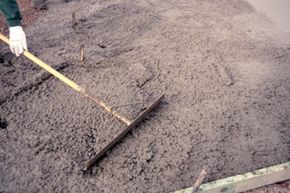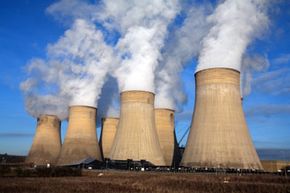When you think of green building materials, coal is probably the last thing that comes to mind. Coal is, in most practical applications, neither green nor is it a building material. On the contrary, coal is responsible for a large chunk of the greenhouse gas emissions and air pollution that is produced worldwide. But in an ironic twist, coal is also responsible for the emergence of fly ash concrete, a new building material that could help curb carbon emissions in the construction industry.
Fly ash is produced when coal is burned, and environmental laws in the United States require power companies to trap and properly dispose of it. Disposal presents a challenge because of the sheer amount of coal ash produced by coal-fired power plants, and also because the heavy metals in coal make fly ash a potentially dangerous substance. Coal plants in the U.S. don't exactly have the cleanest track record in dealing with coal ash disposal, either, as several major coal ash spills have been reported in recent years.
Advertisement
To deal with both of those problems, the construction industry had the clever idea to start formulating concrete out of fly ash, substituting fly ash for Portland cement (the primary ingredient in most concrete). Surprisingly, fly ash has several characteristics that make it a perfect ingredient for concrete: It has great strength and durability (although we're still waiting to see how it performs long-term), and of course, it's cheap. And because it's a recycled material, it helps to prevent concrete companies from unnecessarily mining for other materials to make concrete.
Everybody wins, right? In many ways, fly ash concrete does look like a winner, but there are still some lingering concerns about the safety of surrounding ourselves with too much fly ash. Coal is a material that's full of harmful substances, and there are still some questions about whether heavy metals would be able to leach from concrete made with coal ash. Concerns have also been raised over whether using fly ash would expose builders to lawsuits and exempt them from insurance coverage. Continue reading to learn more about how fly ash concrete is made, and to figure out if it is indeed safe.
Advertisement

